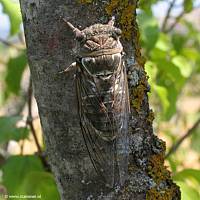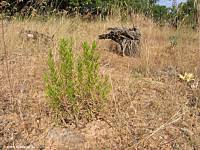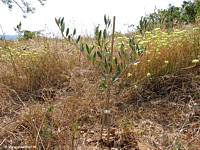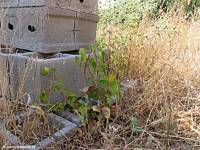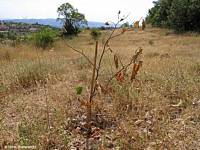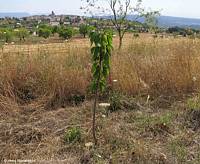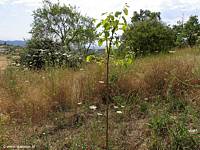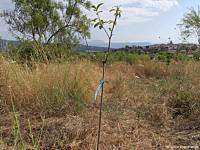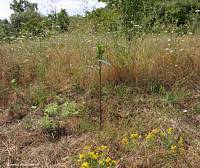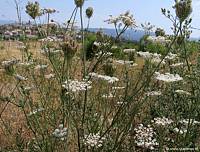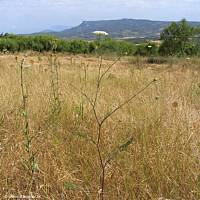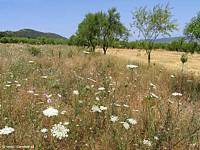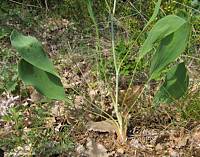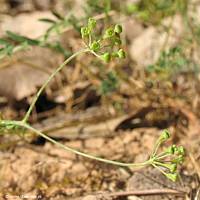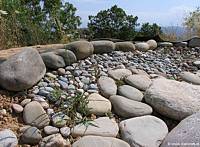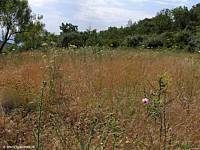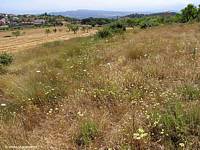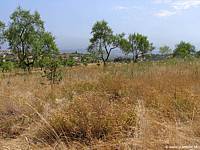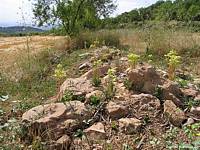|
|
Nature
Switched On
|
|
|
introduction |
2007 July 14 & 15, Saturday & Sunday By now most birds have decided to keep |
Lyristes plebejus against a Quercus faginea
tree on the central terrace.
|
|
|
||
|
Rosmarinus officinalis is a
champion in dry conditions and although it received very little
watering it is surprisingly vital. |
||
|
Another champion is the good old Olive tree, in
this case the variety 'Picual'. |
||
|
Hedera helix
(Common Ivy) hasn't grown much since
its pruning, probably due to a poor and/or
shallow soil but seems to keep up. Sunday 9:59 |
||
|
Corylus avellana (Common
Hazel) is having more difficulties. Still one green leave is
present and also the buds for next year have developed but will it
survive the summer.. |
||
|
Quince (Cydonia oblonga var. 'Gigante
de Wranja'). |
The fruit trees on the lower terrace have received the biggest quantity of water
|
|
|
Cherry tree on the lower
terrace, looking north-east. Sunday 10:27 |
||
|
Plum tree (green,
autochthonous). Sunday 10:26 |
||
|
Plum tree (red, 'Freedom') |
||
|
The spontaneous vegetation is dominated by one species these days: the Wild carrot (Daucus carota). Thanks to its deep taproot (the carrot) it is not so affected by the summer drought and offers a remarkable fresh and sturdy aspect.
|
||
|
After flowering Wild carrot
forms typical cones of folded flower stems which offer shelter for
many insects. Saturday 12:22 |
||
|
An isolated Wild carrot shows the graceful style
of this plant that resists the strongest of wind gusts. |
Wild carrot with
Althaea cannabina on the lower western terrace. |
|
|
Only one new species detected: Bupleurum rigidum, a plant that has something archaic and primitive about it, both in leaves and flowers. |
||
|
Bupleurum rigidum in the half
shade of the wood border. |
||
|
Flowers of Bupleurum
rigidum. Sunday 10:11 |
||
|
|
||
|
Close-up of the pond, looking east. |
||
|
These photographs taken around midday give an impression of the midsummer aspect of the lower terrace from the eastern to the western extreme.
|
||
|
Eastern extreme, looking east. |
Centre, looking south-east. Sunday 10:36 |
|
|
Centre, looking east. In the foreground some
Santolina chamaecyparissus
shrubs |
Western extreme. Looking south-east. Rock garden with flowering Sedum sediforme. Sunday 10:40 |
|
|
introduction
|
|
